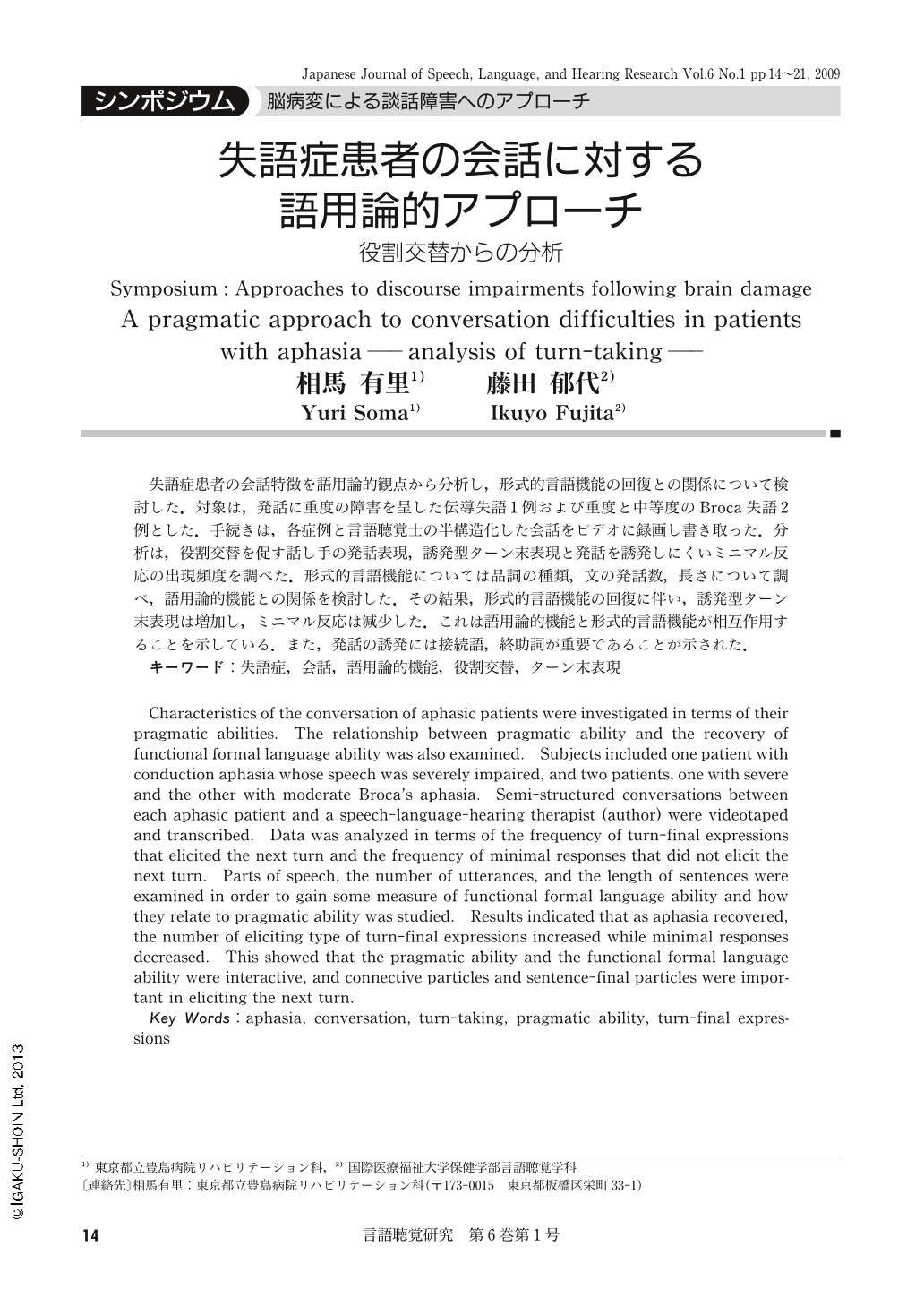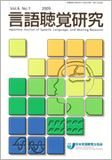Japanese
English
- 有料閲覧
- Abstract 文献概要
- 1ページ目 Look Inside
- 参考文献 Reference
失語症患者の会話特徴を語用論的観点から分析し,形式的言語機能の回復との関係について検討した.対象は,発話に重度の障害を呈した伝導失語1例および重度と中等度のBroca失語2例とした.手続きは,各症例と言語聴覚士の半構造化した会話をビデオに録画し書き取った.分析は,役割交替を促す話し手の発話表現,誘発型ターン末表現と発話を誘発しにくいミニマル反応の出現頻度を調べた.形式的言語機能については品詞の種類,文の発話数,長さについて調べ,語用論的機能との関係を検討した.その結果,形式的言語機能の回復に伴い,誘発型ターン末表現は増加し,ミニマル反応は減少した.これは語用論的機能と形式的言語機能が相互作用することを示している.また,発話の誘発には接続語,終助詞が重要であることが示された.
Characteristics of the conversation of aphasic patients were investigated in terms of their pragmatic abilities. The relationship between pragmatic ability and the recovery of functional formal language ability was also examined. Subjects included one patient with conduction aphasia whose speech was severely impaired, and two patients, one with severe and the other with moderate Broca's aphasia. Semi-structured conversations between each aphasic patient and a speech-language-hearing therapist (author) were videotaped and transcribed. Data was analyzed in terms of the frequency of turn-final expressions that elicited the next turn and the frequency of minimal responses that did not elicit the next turn. Parts of speech, the number of utterances, and the length of sentences were examined in order to gain some measure of functional formal language ability and how they relate to pragmatic ability was studied. Results indicated that as aphasia recovered, the number of eliciting type of turn-final expressions increased while minimal responses decreased. This showed that the pragmatic ability and the functional formal language ability were interactive, and connective particles and sentence-final particles were important in eliciting the next turn.

Copyright © 2009, Japanese Association of Speech-Language-Hearing Therapists. All rights reserved.


